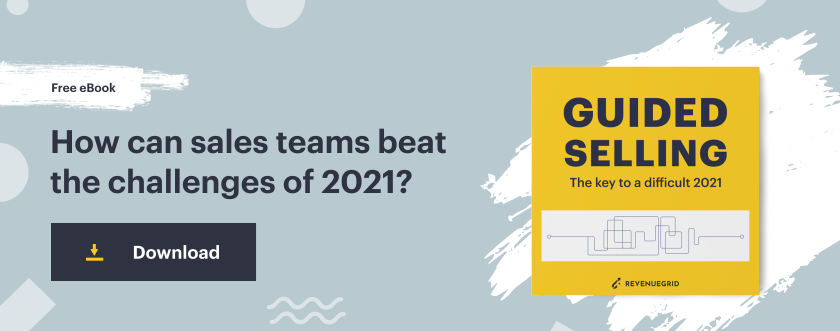In winter 2021 Salesforce plans not to enable Lightning sync for its new users and the product retirement for entire user base is scheduled for the first half of 2023. The company has recently made a new addition to the integration line-up, called Einstein Activity Capture – the tool substituting Lightning for Salesforce users.
Salesforce Lightning vs Einstein Activity Capture
Like Salesforce marks in its Help Center: “Salesforce will no longer allow orgs to enable Lightning Sync after Winter ’21 (source). Salesforce is encouraging its clients to move to Einstein Activity Capture and is positioning it as the long-term activity capture product.” This change brings a great question. How Einstein Activity Capture is different from Lightning Sync and is this change beneficial for Salesforce customers?
Let’s explore what is Einstein Activity Capture (EAC) in more detail.
In the Salesforce Help article on Einstein Activity Capture, it states that: “With Einstein Activity Capture, emails and events that you send and receive are automatically added to the activity timeline of related account, contact, contract, lead, opportunity, and quote records. Plus, contacts and events are synced between the connected accounts and Salesforce.”
This definition brings EAC quite close to Lightning Sync, with the main difference that EAC is automatically logging incoming and outgoing emails to the related events. In addition, EAC also works in the background. It means that emails and events automatically log to Salesforce records and you do not have to push any button to perform this synchronization.
The other important benefits of EAC in comparison to Lightning are:
- Email insights – Einstein AI, incorporated to the EAC, processes each email and can offer users useful information about the next actions based on the email content and prepare a more tailored response to the client
- Recommended connections – EAC shows how many interactions another user had with this Lead or Contact so you can make a decision whether you have to work further with this prospect to establish a closer relationship or close the deal
- Activity metrics – Einstein AI allows capturing some important activity metrics, such as last activity date, last call data, or inactive days on the deal
- Activities dashboard – EAC helps to see the summary of the sales activities that were added to Salesforce manually and through EAC. You can use filters to view information about specific activity owners, activity types, and dates, as well as define the most active users.
All these advantages help EAC to outperform Lightning, but we should not forget about some considerations.
One of the most important considerations is the storage of activities outside of Salesforce. EAC stores all activities on the security server outside the Salesforce. It means that these activities do not appear in the standard Salesforce reports, users can’t delete emails from EAC and if you decide to migrate from EAC in the future the entire information will be lost. This is a huge concern that can lead to sufficient challenges for Salesforce users.
The other problem is the control of your data. With EAC you can’t choose what is stored and what isn’t. In addition, the automatic synchronization to custom objects is not supported.
The final problem is that recurring events are not synced with EAC and they are displayed as a series of unrelated single events.
As you can see, Einstein Activity Capture has some limitations that might prevent Salesforce users from its effective application. Fortunately, there is a possibility to make it the most powerful solution for syncing contacts and events between Microsoft or Google applications and Salesforce. That’s a point where Revenue Grid comes into play.
Revenue Grid supplements EAC in terms of data capturing and synchronization. With Revenue Grid all your activities are stored in Salesforce and changes made are automatically synced in Outlook or Google calendar and vice versa. In addition, email attachments are automatically captured and stored in Salesforce; event reminders are automatically generated from captured events and recurring events are synced with Salesforce.
Read more about the Revenue Grid vs EAC.
It’s also good to know that Revenue Grid has some benefits in comparison to EAC in terms of data storage and ownership. Revenue Grid does not store your data like EAC and in case you’d like to migrate to another solution in the future you won’t lose any important information. Besides, the sync engine in Revenue Grid is fully customizable and you can fully control what data is synced and what isn’t.
Hopefully, this quick overview of the Einstein Activity Capture will help you to determine the best ways to integrate emails and calendars in your organization and to choose the best combination of tools for raising the effectiveness of your sales workflow.
Salesforce Lightning Walkthrough
What is Salesforce Classic?
Prior to the Lightning Experience release, Salesforce Classic was the interface of the Salesforce CRM platform. It was released in 2016 and since that period has been the standard interface of the Salesforce CRM.
Today, however, the UI looks outdated due to its text-centricity, a big share of unused space, and scarce graphical elements displayed in low resolution. As a result, new users find it difficult to navigate the Classic UI and look for greater productivity within their CRM. In response to the growing user requirements and changes in the sales workflows across the globe, Salesforce introduced a new UI, called Lightening experience.
What is Salesforce Lightning?
Salesforce Lightning is the new user interface that changes the look from Salesforce Classic and gets newer features. The intuitive interface and the smooth workflow are the two major advantages of the new product.
Salesforce Lightning vs Classic
The major difference between Salesforce Lightning and Classic lies in-home features, activity timeline, and workspace page layout. In addition to events, calendars, and customizable dashboards, Lightning includes new, key deals and performance charts on the home page. Lightning helps users keep track of their history of activity for each account or each lead, which is not supported in the Classic version. In addition, Lightning allows users to add new forms of pages, such as App, Home, and Record pages.
Let’s dive into Lightning interface benefits and drawbacks in more detail, as the Salesforce Classic to Lightning migration is inevitable and every organization would like to easily go through this process.
Everything forward will be Lightning, as Salesforce executives claim. It offers tons of benefits for businesses and will surely be embraced by every employee in every company, sooner or later. Let’s consider the most prominent advantages and disadvantages of Lightning Experience User Interface.
Lightning UI pros:
- It’s faster, quicker to customize (with easy drag and drop configuration), and easier to maintain; though it requires extra time to get adjusted to.
- It is more flexible and dynamic as compared to Classic UI, with better visualization due to Smarter Views.
- Sales Path efficiently helps define key stages for a Lead to go through and fields per stage a sales rep needs to complete.
- The new practical Kanban view offers insights into opportunities that help manage them easily.
- Modern design and enhanced functionality for Reports, Charts and Dashboards.
Lightning UI cons:
- Teams will spend more time on the migration. It’s an arduous process and can take up to several months or even a year.
- The slowdown in users’ adoption as a result of their long coexistence with Classic.
- Some applications from the AppExchange might not be supported in the new edition right from the start. You need to check everything minutely before the migration.
In fact, both Classic and Lightning versions lack some great features. For example, sales and support reps heavily use the Classic UI’s feature that allows them to assign tasks in Lightning to multiple users. This one is not available in Lightning yet.
On the flip side, users will miss some Lightning features, like Sales Path, Assistant, Kanban, Einstein Lead Scoring, in Classic UI, and so on.
Lightning migration pitfalls.
While changing UIs, users can naturally experience major technical issues. The main task of the Salesforce admin team in a company is to identify gaps and help users eliminate them. As for pain points, here are some of them:
User Adoption
Unfortunately, lightning doesn’t allow for record sharing. The way out can be switching to Classic, finishing the task and returning to Lightning (or using a special component from Salesforce AppExchange). Not the best way, but at least there is one for now.
Low operation speed
The new interface is loaded with data and functions, leading to low operation speed. This one will definitely irritate many users. You’ll also need better hardware for Lightning’s virtual machines.
JavaScript buttons
Lightning also doesn’t support Custom JavaScript buttons. The way out can be an alternative build of quick actions, triggers, or workflow rules.
On-page search
Ctrl + F doesn’t work as an on-page search. The possibility to find something in a new system is vital, but it’s absent from Lightning.
Visualforce
You should review Visualforce pages, sort them out by relevance, and migrate to a new SalesForce Lightning Component. You should also redesign all pages with the Lightning design system.
Event attendees
You can’t add event attendees in Lightning.
URLs
Lightning also doesn’t allow users also can’t auto-populate using URL.
Task status
When you transfer a completed task, their status changes and requires manual processing to be corrected.
As you can see, there are no off-the-shelf solutions for these issues right now. Let’s hope Salesforce developers will introduce the needed improvements as soon as possible.
Salesforce Lightning Experience: challenges and ways to migrate
As migration is inevitable, your main challenge is to assure a smooth transition. Below we offer a set of tips from our in-house specialists on how to make Salesforce Lightning connect to your organization with minimum losses.
Implementation workflow:
- Outline your transition goals
- Map out workflows
- Discuss and prioritize functionality
and potential integrations - Run a Lightning readiness check
- Work in a Sandbox
- Test your goals
- Roll out Lightning to power users
- Create detailed documentation
- Introduce Lightning and do the training
- Launch
It’s vital to define a plan in the first place. It will help you reduce hiccups while swapping user interfaces midstream. Plus, you have to think about adequate training for your team in advance. You can employ versatile sessions, webinars, strategic meetings, face-to-face training, and coaching sessions.
Sample Plan:
- Educate your company on Lightning benefits
- Conduct a gap analysis of non-supported features
- Decide which users move to Lightning first (test group)
- Develop an internal marketing strategy to educate future users
- Create a training plan
Change on the horizon.
From now on, Salesforce intends to build new features only for Lightning. There are already 200 things that you can do with it. Unlocking new opportunities of Lightning Experience, as compared to Classic UI, can become the final straw that breaks the camel’s back. The reason is the apprehension of some companies’ stakeholders to migrate because of the extended learning curve, the need to prove ROI, etc.
Still, everyone needs to remember that such changes are never easy and that the migration is imminent. Here’s to hoping it will go as smoothly as possible for all companies.


